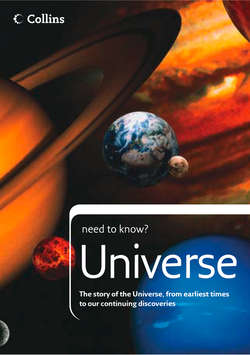Читать книгу Universe: The story of the Universe, from earliest times to our continuing discoveries - Peter Grego - Страница 14
Moon musings
ОглавлениеThe same gravity that keeps you anchored to the Earth keeps the Moon in orbit. With a diameter about the same as the width of the continental USA, the Moon orbits at an average distance of 384,401km. It took the Apollo spacecraft a few days to traverse the gulf of space between the Earth and Moon, but it would take about a month to get there at the speed of a commercial jet airliner. Second in brilliance to the Sun, the Moon is 400 times smaller than the Sun, but as it is 400 times closer to the Earth, the Sun and Moon appear about the same size in our skies. As the Moon orbits the Earth every month, it goes through a sequence of phases, broadening from a narrow crescent in the evening skies to full Moon in around two weeks, and then becoming narrower again until it is a thin crescent in the morning skies.
At new Moon, the Moon is sometimes seen to move directly in front of the Sun, blocking its light and causing a partial or total eclipse. At full Moon, the Moon sometimes enters the Earth’s shadow and undergoes a partial or total lunar eclipse. Solar and lunar eclipses can be awesome sights.
